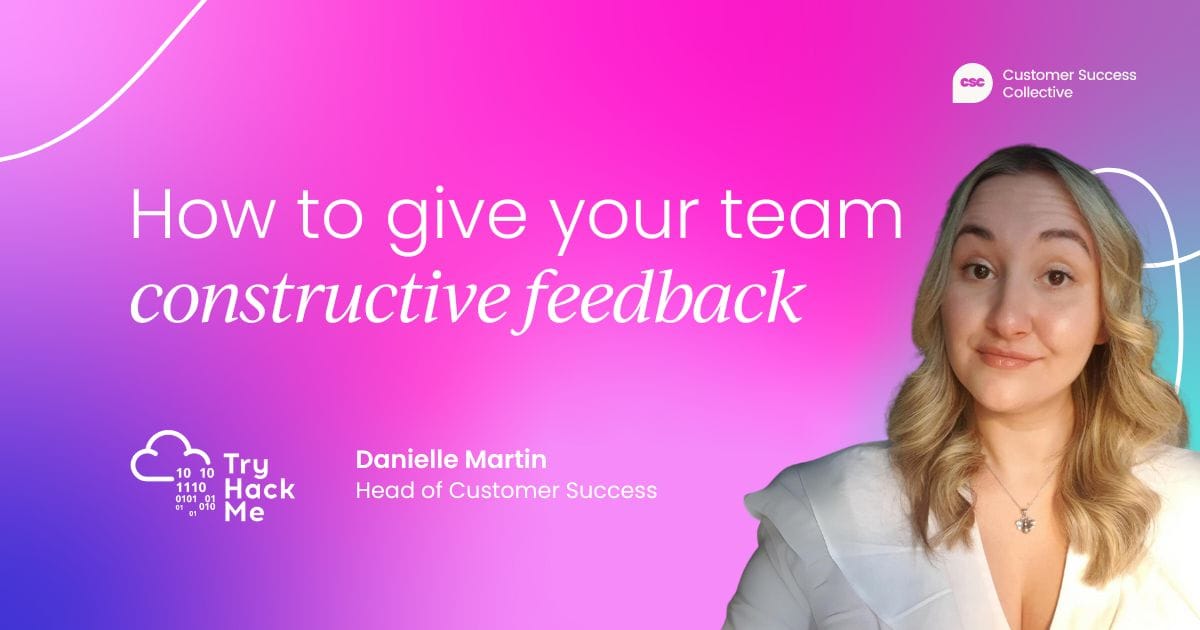Businesses need human connections. Whether it’s fostering relationships with customers, collaborating across teams, or navigating workplace dynamics, the ability to engage with people on a deeper level is what separates good companies from great ones.
Yet, in fast-paced environments with ambitious revenue targets, prioritizing genuine human interactions can be challenging.
So, what does it really mean to be human-first in the workplace?
In this guide, we’ll explore:
- Why a human-first approach matters
- Implementing a human-first strategy in CS
- What it means to be human-first in CS
- How to start implementing a human-first approach
- How to build stronger workplace relationships through a human-first approach
- Applying a human-first approach to customer interactions
- The challenges and realities of implementing a human-first approach
Why a human-first approach matters
In any business, it’s easy to get caught up in processes, automation, and metrics. But at the core of everything we do is human connection.
A human-first approach means prioritizing relationships, empathy, and understanding in every interaction – whether it’s with customers, colleagues, or stakeholders. It’s about moving beyond transactional conversations and instead fostering trust and genuine engagement.
This approach is not only beneficial for customers but also for internal teams. Employees who feel heard, valued, and empowered are more engaged and motivated. A human-first mindset fosters a positive company culture where collaboration and innovation thrive.
Implementing a human-first strategy in customer success
So, how do we integrate a human-first approach into customer success? Here are a few key strategies:
- Active listening: Customers want to feel understood. Taking the time to listen – really listen – helps uncover their true needs and concerns. Instead of rushing to provide a solution, I focus on understanding the bigger picture.
- Empathy-driven communication: Every customer has unique challenges. Approaching conversations with empathy allows me to tailor my responses and solutions in a way that feels personal and effective.
- Building long-term relationships: Success isn’t just about solving immediate problems – it’s about building trust over time. Customers who feel valued are more likely to stay loyal to a company.
- Encouraging cross-team collaboration: A human-first approach shouldn’t be limited to Customer Success teams. Working closely with sales, product development, and support teams ensures that customer insights drive meaningful improvements across the company.
- Using technology wisely: While automation and data are valuable, they should never replace the human element. I use technology to streamline processes but ensure that customer interactions remain personal and thoughtful.

What it means to be human-first in customer success
A human-first approach is something that anyone – at any level of their career – can adopt. It’s about recognizing the person behind every interaction, whether that’s a customer, a colleague, or a stakeholder.
To be human-first in your day-to-day work, you have to think beyond just the transactional aspects of your role and genuinely connect with the people you engage with.
For me, this means understanding what truly drives my clients, beyond just why they purchased our product. I don’t just want to know that they chose our platform – I want to understand the deeper motivations behind that choice. Is it about improving efficiency so they can spend more time with their families? Are they striving for a promotion that this tool could help them achieve?
When we understand the human motivations behind decisions, we gain deeper insight into what’s truly at stake if we don’t work together to make their experience a success.
Customer-first vs. human-first
A lot of businesses talk about being customer-first, which is great, but being human-first takes it a step further.
Customer-centric strategies focus on putting the customer at the center of every business decision, but a human-first mindset means treating customers and employees as actual people – not just as numbers, support tickets, or revenue opportunities.
One way I apply this thinking in my work is in customer support. I also manage our support team, which gives me the opportunity to ensure that a human-first approach is embedded throughout the entire customer journey.
When a support agent receives an angry email, it’s easy to take it personally. But instead of reacting defensively, I encourage my team to think about the human behind the complaint. If someone took the time to write a long, frustrated message, that emotion didn’t come from nowhere. There’s a reason they feel this way, and it’s our job to uncover it.
Seeking to understand the "why" behind a complaint helps us not only resolve the issue but also build stronger relationships with our customers.
How to start implementing a human-first approach
The idea of making a workplace truly human-first might seem overwhelming – especially if you’re not in a leadership role. But the reality is, you don’t need company-wide initiatives or executive approval to start embedding a human-first mindset in your own interactions.
1. Start with your colleagues
Being human-first isn’t just about external customer interactions – it also applies to how we engage internally. Workplaces can be stressful, and it’s easy to react emotionally to a terse email or a rushed request.
But instead of assuming the worst, try stepping back and considering what pressures your colleagues might be under. When you ask clarifying questions and show empathy, you often diffuse tension and open the door to a more productive conversation.
2. Recognize emotional reactions and respond thoughtfully
In high-pressure environments, it’s easy to act on gut reactions. But taking a moment to reflect on why you feel a certain way – or why someone else might be reacting a certain way – can lead to better interactions.
The book The Chimp Paradox by Steve Peters talks about managing emotional impulses, which is an incredibly useful skill in workplace relationships. Instead of escalating conflicts, learning to pause and ask “Why is this person reacting this way?” can help foster better communication.
3. Ask questions that build connection
When engaging with both customers and colleagues, one of the most powerful things you can do is ask questions that go beyond the surface. If a colleague sends a blunt request, responding with, “I see this seems urgent – can you help me understand why?” not only helps you prioritize your response but also encourages open dialogue. Similarly, with customers, asking about their deeper goals and challenges strengthens relationships and allows for more meaningful collaboration.
A human-first approach isn’t about grand, sweeping changes – it’s about small, intentional shifts in the way we interact with people.
At the end of the day, business is about people. And when we focus on the human side of what we do, success follows naturally.

Building stronger workplace relationships through a human-first approach
One of the biggest challenges in any workplace is navigating relationships between different teams. In customer success, a common friction point is the dynamic between sales and CS – what I like to call the "Whose Deal Is It Anyway?" game. This happens when there’s confusion or disagreement about ownership of an account, and if not handled well, it can escalate into a frustrating, never-ending back-and-forth.
To tackle this, I created a lighthearted document featuring a GIF to bring some humor to the situation. Humor helps diffuse tension, but the real key is shifting our mindset: instead of viewing a colleague as an opponent, we should aim to understand their perspective.
Recently, I found myself in one of these classic “Whose Deal Is It Anyway?” debates. We both presented our cases passionately, but ultimately, the decision didn’t go in my favor.
Instead of holding onto frustration, I took a step back, reflected, and realized that my colleague had actually made the right call. The next day, I went back to them and acknowledged their decision, letting them know I saw their point. This not only strengthened our professional relationship but also led to a productive discussion about refining our internal processes.
The takeaway? Disagreements don’t have to create division – they can be opportunities for collaboration and improvement.
Balancing passion with perspective
Taking a human-first approach doesn’t mean always conceding or avoiding difficult conversations. You can be assertive and stand your ground, but the key is to continually check yourself:
- Are we actually moving toward a resolution, or are we just arguing?
- Are my emotions clouding my judgment?
- Am I trying to "win" the conversation, or am I genuinely trying to understand their perspective?
When we put our egos aside and approach workplace conflicts with curiosity rather than defensiveness, we not only resolve issues faster but also build stronger relationships with our colleagues.
Applying a human-first approach to customer interactions
In CS we inevitably deal with complaints. When a customer sends a strongly worded email, my first instinct – like many people – is to jump to the defense of my team. I want to shield them and respond immediately, but I’ve learned that taking a pause is crucial.
Instead of reacting emotionally, I encourage my team to step back and gather all the details. What’s the real reason behind the complaint? What does the customer hope to achieve? And most importantly, what’s at stake for them?
A strategy I’ve found effective is flipping the conversation. Instead of offering a standard apology or an immediate solution, I ask:
"What does a successful resolution look like for you?"
This approach often catches customers off guard in a positive way. They were likely expecting a defensive or generic response, but instead, they’re being given agency. It shifts the dynamic from confrontation to collaboration and often leads to more constructive discussions.
Authenticity in customer communication
Empathy isn’t just a buzzword – it’s about genuinely understanding a person’s frustrations and responding in a way that reflects that understanding. Instead of sending a templated, impersonal apology, I take the time to craft a response that acknowledges their frustration and presents a thoughtful resolution.
For example, rather than:
"We apologize for any inconvenience. Your issue has been noted."
I’d write something like:
"Hey Jim, I can tell this situation has been really frustrating for you, and I appreciate you taking the time to explain it. I’ve gone through the details carefully, and from what I understand, the core issue is [X]. Would you agree? If so, let’s figure out how we can resolve this in a way that works best for you. What would your ideal solution look like?"
Taking this extra step can completely change how a customer perceives a situation. Instead of feeling dismissed, they feel heard and valued.
The business impact of a human-first mindset
At the end of the day, prioritizing human connection isn’t just the “right” thing to do – it’s a smart business strategy.
People remember how you make them feel. Whether it’s a customer deciding whether to renew their contract, a sales rep considering how to collaborate with CS, or a frustrated support agent handling a difficult ticket, treating people with empathy, respect, and authenticity fosters long-term loyalty and trust.
A human-first approach doesn’t require big policy changes – it starts with small, daily interactions. And when we commit to seeing people as individuals rather than obstacles, we create an environment where everyone – customers and colleagues alike – feels valued and heard.
Challenges and realities of implementing a human-first approach
One of the biggest challenges in adopting a human-first approach is simply time. No matter how well-intentioned you are, if you're managing a large client base, regular one-on-one interactions can become difficult. This is where automation and customer success tools can be invaluable.
By handling administrative tasks, tracking metrics, and categorizing clients, these tools free up time for the meaningful, human-to-human connections that truly matter.
Another major challenge is the pressure of revenue targets. While I thrive on hitting ambitious goals, targets that are unrealistically high can create tunnel vision.
When teams are forced to focus solely on revenue generation, it can lead to a more aggressive, sales-driven approach that prioritizes upselling over genuine customer needs. The result? A loss of trust. If customers feel pushed into purchasing add-ons or services they don’t actually need, it damages relationships and erodes long-term loyalty.
The essence of customer success is to be a strategic partner – to understand a client’s needs and align them with solutions that genuinely help them grow. If a client needs an extra service, it should feel like a natural fit, not a hard sell.
It’s like selling a shoe to someone who’s barefoot – if they need it, it’s the easiest sale in the world. But if you’re trying to push an unnecessary product just to meet a quota, customers will see right through it.
How to address these challenges
So, how do you push back against unrealistic expectations without sounding like you’re just making excuses?
1. Understand the "why" behind the targets
If a revenue goal seems unattainable, start by having a conversation with leadership. Ask, “Why was this target set?” More often than not, it ties back to the company’s overall revenue goals, which have been broken down into department quotas. Understanding the reasoning allows you to engage in a more informed discussion about whether the targets are feasible given current resources.
2. Present data and solutions, not just problems
If targets are negatively impacting customer relationships, bring concrete evidence to leadership. Show the impact of aggressive selling on customer trust, renewal rates, or feedback scores. Additionally, propose solutions – can efficiency be improved through better prioritization? Could automation reduce workload? Offering actionable ideas makes it more likely that leadership will listen.
3. Prioritize internal efficiency
Sometimes, the issue isn’t the target itself but how time is being spent. Could outreach efforts be streamlined? Are there tasks that could be automated without sacrificing the personal touch? If after optimizing workflow the targets still feel unrealistic, that’s when it’s time to escalate the conversation.
Company size and its effect on the ability to be human-first?
The ease of implementing a human-first approach often depends on the scale and maturity of a company.
Startups typically have fewer processes and less red tape, allowing for agility in how customer relationships are managed. However, if customer success is brought in late – only after issues have piled up – then teams often find themselves in firefighting mode rather than proactively building relationships.
Larger companies face different challenges. With a broader customer base, CS teams might struggle to provide personalized service at scale, leading to a more reactive rather than proactive approach. Additionally, stricter processes and multiple stakeholders can slow down decision-making, making it harder to pivot toward a human-first strategy.
That said, while large organizations may have more bureaucracy, they also often have more resources – bigger teams, more automation tools, and dedicated customer success operations – allowing for structured, scalable approaches to relationship-building.

Fitting a human-first approach to different business models
Customer-first and human-first approaches are closely aligned, but can they work in companies that are product-led or sales-driven?
The short answer is yes, but it depends on leadership alignment.
In a customer-led company, a human-first mindset is naturally easier to implement. These companies already prioritize customer relationships, so incorporating empathy and personalized interactions feels like a natural fit.
However, in a product-led company, the challenge is ensuring that customer feedback isn’t ignored. If there’s a disconnect between what customers are asking for and what the product team is developing, it can create friction.
The key here is collaboration – when sales, CS, and product leaders align on the importance of customer input, a human-first approach can still thrive.
Similarly, in a sales-driven company, the biggest risk is that aggressive quotas override the customer experience. However, if sales teams recognize that trust-building leads to higher long-term retention and expansion, then a human-first mindset can work even within a revenue-focused culture.
At the end of the day, company structure matters, but what truly determines whether a human-first approach succeeds is the mindset of the people running the business.
When key leaders across departments prioritize collaboration, communication, and customer experience, the entire organization benefits.
Businesses thrive when teams work together instead of in silos. When leaders and employees genuinely care – not just about hitting numbers, but about the people behind those numbers – companies create stronger, more lasting relationships with both customers and colleagues. And that’s what makes a business truly successful.



 Follow us on LinkedIn
Follow us on LinkedIn









